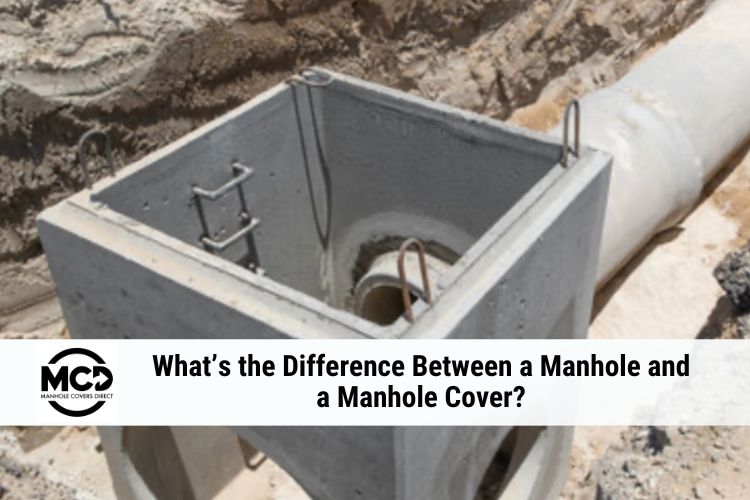
What’s the Difference Between a Manhole and a Manhole Cover?
Manhole covers are everywhere, yet wherever there’s a manhole cover, there’s likely a manhole beneath it. Manholes and manhole covers often get mistaken for serving the same purpose, yet they are different in many ways. In this blog, we will specify the differences between a manhole and a manhole cover, along with how they each contribute to each other’s functionality and why we need both in everyday infrastructure.
What is a manhole?
The term “manhole” has been around forever and can be traced back to the 1st Century when the Romans dug holes for access points that were big enough to provide entry for a man to fit inside. Manholes are mostly pre-cast concrete structures that house underground utilities for maintenance, inspection, or repair. The utilities inside the manhole may vary. Some examples of these utilities include water, sewer, gas, telephone, electrical, and storm drains.

What is a manhole cover?
The manhole cover is the access point that allows authorized personnel into the manhole to conduct maintenance and inspections. These covers are typically made of steel or cast iron and prevent people and objects from falling into the utilities below. Manhole covers are heavy to resist accidental displacement and are designed to withstand high traffic loads. Manhole covers also protect the underground infrastructure from external elements such as debris, rainwater, and other environmental factors.

Overall, both manholes and manhole covers are essential for the maintenance and accessibility of underground utility systems, ensuring their perpetual functionality and safety.
There are various terms based on your industry and location. Check out our blog, “What Do YOU Call A Manhole Cover,” to learn more about some of the broad terms we use for manhole covers!


